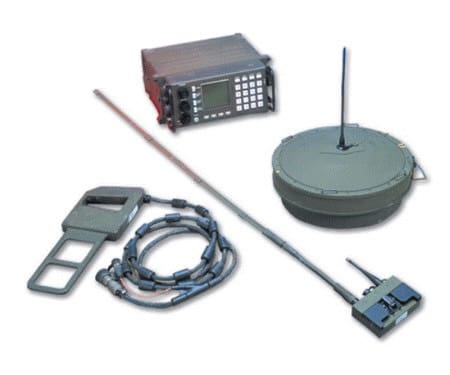Joint Threat Warning System is the SIGINT Collection architecture for USSOCOM. The current manpack version is the AN/PRD-13(V)2.

While I used an early version of this system in Haiti over 20 years ago, it has come a long way from the AN/TRQ-30 DF loops first fielded to 3rd Group in 1990. They were the height of 1950s technology and the receiver used like 30 D cell batteries.
As communication technology evolves, so must the equipment used to collect signals. Consequently, PM-JWTS is hosting an Industry Day, 13-14 July, 2017.
The Program Manager is specifically interested in signals intelligence technologies, ideas and solutions which advance One or more of the following Key Interest Areas:
1) Unique Signals of Interest
2) Modular and scalable open architecture systems (please see additional guidance below)
3) Remote C2 and Data Viewing
Further Clarification:
Modular and Scalable Open Architecture Systems: Need to allow the operator to choose relevant SIGINT applications and tailor the system to best support individual mission requirements. JTWS is seeking potential solutions with the below criteria as initial guidance but not formal direction:
• Hardware: Provide VPX (VITA 46)/Open VPX (VITA 65) based solutions that are modular and scalable from a body-worn or small UAS form factor to a vehicle/maritime platform to an airborne chassis. Focus should be on a 3U card size in order to maximize reuse between form factors. If use of VPX standards for small form factor solutions is not possible, alternative standards-based options that do not violate the remaining guidelines should be brought forward.
• Data: VITA 49 should be implemented for the data transport layer and output data using the Tactical SIGINT Data Model (TSDM). Systems should be JICD 4.x (currently 4.2) compliant at the sensor level for reporting, tuning, and collaborative geolocation.
• GUI: Partners should deliver capabilities with the ability to conduct full command and control and visualize mission data in RaptorX.
• Software: The adoption of the OpenVPX standard reduces the need for a pure open architecture solution across the program, but systems should still seek to implement open architecture solutions on individual cards in order to combine capabilities and maximize the capacity of each card within the system. Examples include GNU Radio and REDHAWK, but could be extended to any number of current industry and government developed environment.
Remote Capabilities: This capability needs to be Beyond-Line-of-Sight (BLOS), however the program office would prefer Over-the-Horizon (OTH) with minimal latency delays.
Vendors interested in attending the Industry Day should visit www.fbo.gov.

